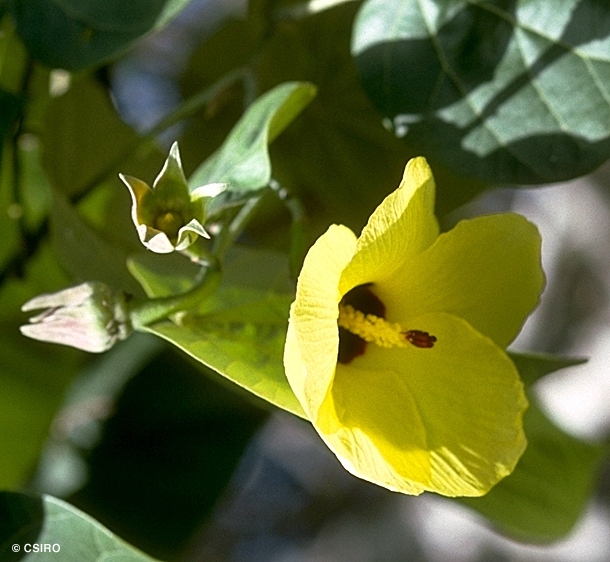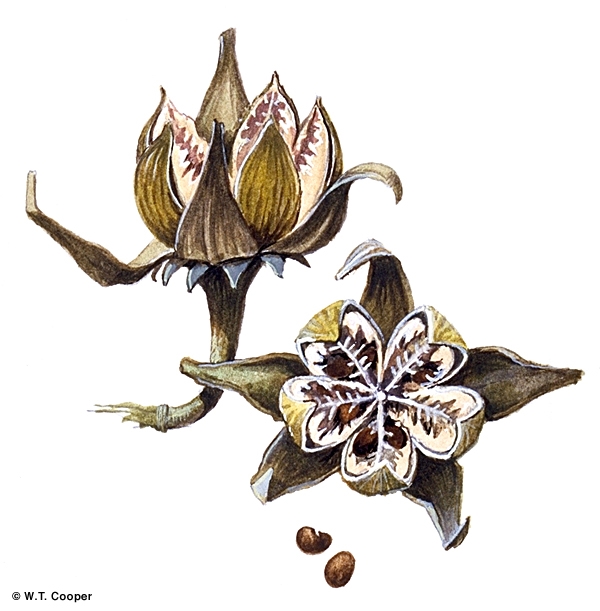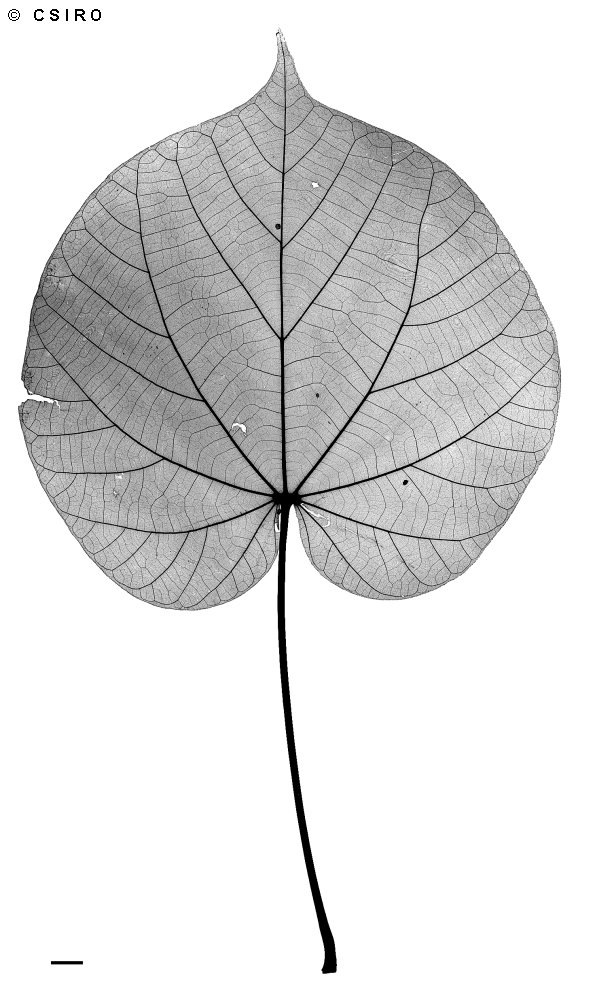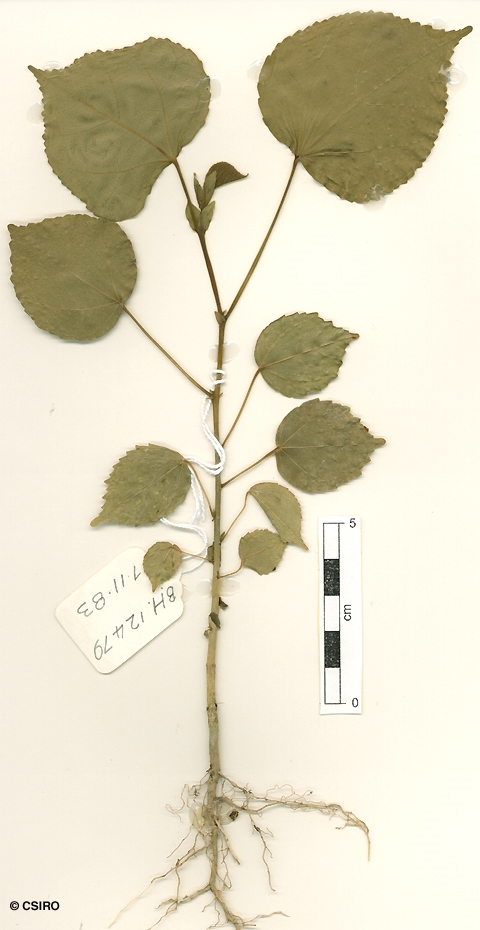Australian Tropical Rainforest Plants - Online edition
Hibiscus tiliaceus L.






Linnaeus, C. von (1753) Species Plantarum 2: 694. Type: Habitat in India.
Cottonwood, Coast; Beach Hibiscus; Hibiscus, Beach; Coast Hibiscus; Coastal Cottonwood; Cotton Tree; Majagua; Cottonwood; Mahoe; Coast Cottonwood; Cottonwood Hibiscus; Gatapa; Green Cottonwood; Native Hibiscus; Sea Hibiscus; Native Rosella
Frequently a poorly formed tree with branches often lying on the ground. Fibrous stripes in the outer blaze.
Leaf blades about 5-20 x 4.5-18 cm, circular or cordate in outline with a large 'V' or indentation where the petiole is attached. Midrib and about eight veins radiate from the point of attachment of the petiole. Stipules rather large, about 15-35 x 8-15 mm. Twig bark strong and fibrous when stripped.
Cotyledons oblong to orbicular, about 8-10 mm long. At the tenth leaf stage: leaf blade reniform to cordate, apex shortly acuminate, upper surface with a few, small, inconspicuous, scabrous hairs along the midrib and main lateral veins; petiole hairy; stipules large, oblong, obovate. Seed germination time 14 to 17 days.
Food plant for the larval stages of the Common Oakblue Butterfly. Common & Waterhouse (1981).
Grown as a shade and street tree and will withstand saline conditions. The large flowers are cream to yellow.
This species may have medicinal properties. (http://squid2.laughingsquid.net/hosts/herbweb.com /herbage/A13228.htm)
The leaves of this species are regarded as a contraceptive. Cribb (1981).





